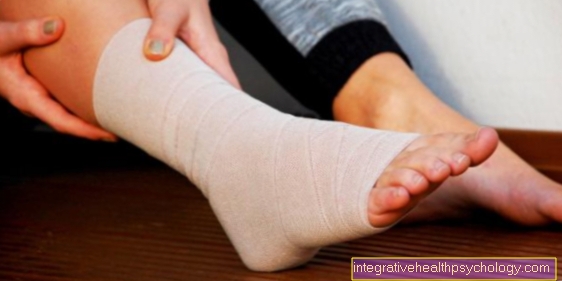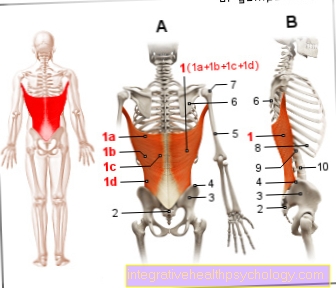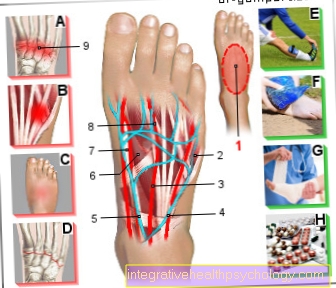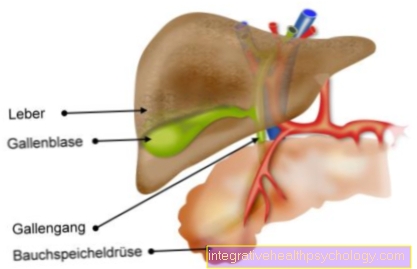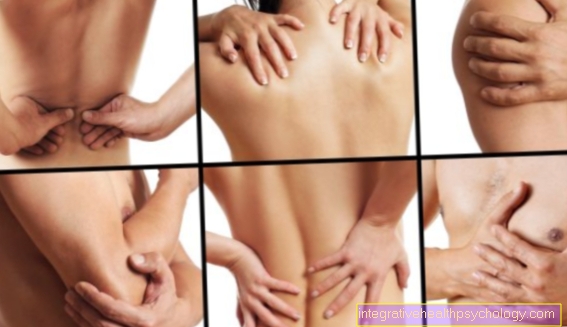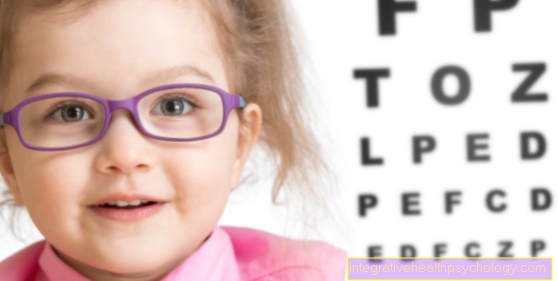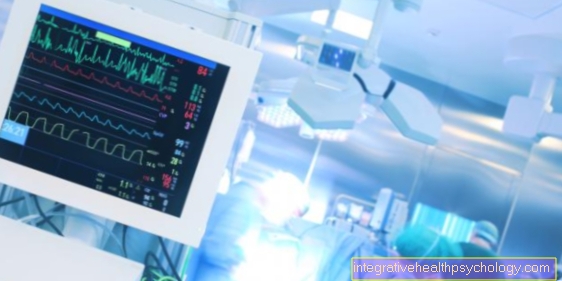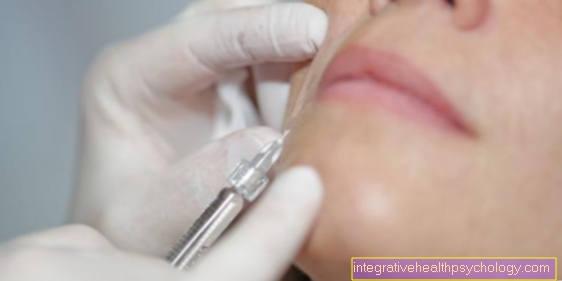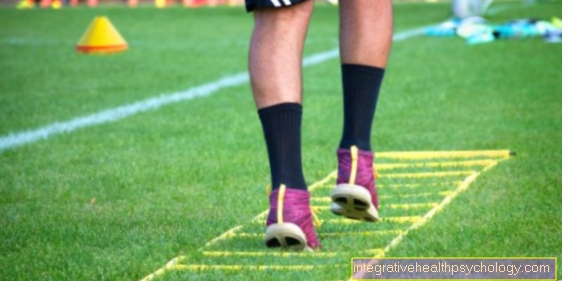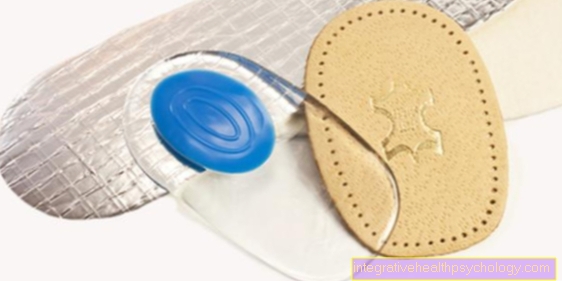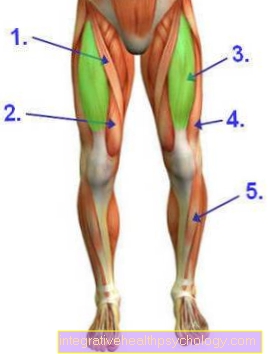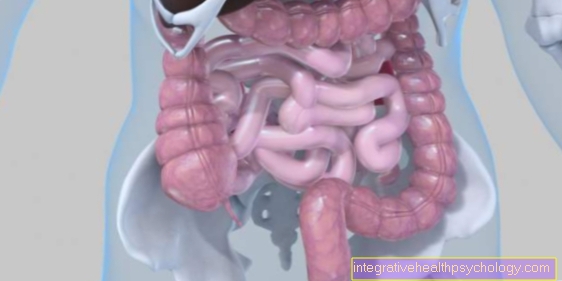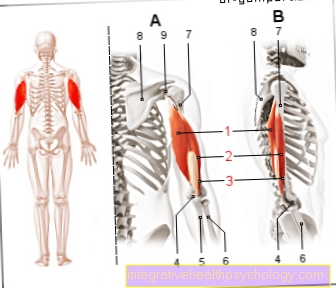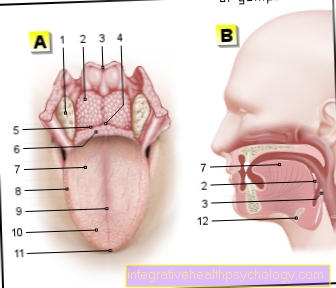Bronchoscopy
introduction
Bronchoscopy is a medical procedure that is of great importance both diagnostically and therapeutically.
In bronchoscopy, you can use a bronchoscope to look at the upper airways and large bronchi.
To do this, a camera on a long, flexible rod is pushed through the mouth and throat into the windpipe.
Then the windpipe and the sections of the airways behind it can be viewed.
In addition, bronchoscopy can be used to take small tissue samples and, if necessary, to carry out medication or other therapeutic interventions.

Indications for a bronchoscopy
In most cases, a bronchoscopy is done for diagnostic purposes.
The goal is often to clarify a hitherto unclear disease of the respiratory tract.
If necessary, a lung tissue disease can also be clarified as part of a bronchoscopy.
For example, if the imaging shows a mass in the lung tissue near the large bronchi, an ultrasound examination of the lesion can be performed during a bronchoscopy, and samples can also be taken if necessary.
Bronchoscopy can also fulfill many functions therapeutically.
For example, foreign bodies can be removed from the bronchi.
Secretions that have settled in the bronchi can also be sucked off during bronchoscopy. If necessary, small stents must be inserted in severe constrictions or the bronchi must be expanded again.
Bleeding can also be assessed and treated with a bronchoscopy.
Formally, so-called fiber-optic intubation, in which intubation is carried out under vision with a camera, also belongs to the bronchoscopy.
However, not all sections of the bronchial system are looked at. Rather, this technique is used to guide the tube through the vocal cords.
If you want to learn more about intubation, check out our article: The intubation - everything you should know
This is how the diagnosis is made
Bronchoscopy plays an important role in the diagnosis of respiratory diseases.
In this way, various aspects can be assessed with this reflection of the airways.
For example, foreign bodies or constrictions can be discovered during bronchoscopy.
In addition, bronchoscopy can also present irritation of the respiratory tract or inflammation.
In addition, during the examination it is also possible to take samples from the mucous membrane of the airways or from the lung tissue directly adjacent to the bronchi.
Unclear masses can be biopsied (sampling with the aid of a thin needle), then the tissue is assessed under a microscope and a diagnosis of the unclear mass can be made.
Further diagnostic options in bronchoscopy result from the simultaneous ultrasound (EBUS = endobronchial ultrasound).
Instead of the normal bronchoscope, one is used that also serves as an ultrasound probe. As a result, space occupations near the bronchi can often be additionally assessed.
execution
A bronchoscopy is usually performed under sedation, a type of short anesthesia is initiated for the examination so that the person being examined sleeps during the intervention, does not experience pain and does not remember the examination afterwards.
However, the sedation is not as deep as a real anesthetic and is therefore associated with a significantly lower risk of complications.
If the person to be examined is sedated, the bronchoscope (usually a camera on a long flexible rod) is inserted through the mouth and throat into the windpipe.
The first complicated bottleneck for this is in the area of the vocal cords.
However, by guiding the bronchoscope with the camera, the passage is usually possible without any problems.
The bronchoscope then moves deeper into the airways, which initially branch into a right and a left branch, then the two sides branch even further.
All airway sections that can be reached with the bronchoscope are then best examined systematically. Depending on the indication, a specific point in the area of the airways can then be sought.
If, for example, a sample is to be taken from a certain area in the lungs, this area can be specifically searched for with the bronchoscope.
If necessary, the bronchoscopy is carried out in this case with an endoscope that is also capable of ultrasound.
The bronchoscopes also have a working channel through which small forceps or needles can be inserted.
Direct sampling is thus possible.
If a general disease of the respiratory tract is sought, a sample can also be taken at several points in the bronchial system.
After completing the examination, the bronchoscope is carefully removed, making sure that there is no bleeding in the bronchial system.
If necessary, small sources of bleeding can also be treated directly.
After removing the bronchoscope from the airways, the sedation is tapered off so that the person examined slowly wakes up again.
This is usually followed by a short observation phase in a recovery room.
Treatments with the bronchoscope
In addition to many diagnostic tools, bronchoscopy also offers many therapeutic options.
For example, a foreign body can be removed from the airway system during a bronchoscopy.
Diagnostics and, if necessary, the removal of a foreign body is the most common indication for a bronchoscopy in pediatrics, for example.
Most often this involves removing small pieces of food (peanuts, carrot pieces, etc.).
In addition, liquid substances such as secretions can be sucked out of the bronchi during a bronchoscopy.
This is an important reason for a bronchoscopy, especially in people who are invasively ventilated.
In the case of particularly pronounced constrictions in the area of the bronchi, bronchoscopy can be used to dilate (widen) these areas.
If necessary, a stent is inserted.
A stent is a metal or plastic tube (possibly also just a wire mesh-like tube) that continues to keep the expanded constriction open.
Another therapeutic option of bronchoscopy is the local introduction of medication.
For example, bronchodilating drugs such as salbutamol can be administered as part of a bronchoscopy.
Irradiation of sections of the lung close to the bronchi can also be carried out during a bronchoscopy.
To do this, a small source of radiation is brought into the correct place in the bronchial system with the bronchoscope.
This means that purely local irradiation can take place without much healthy lung tissue being affected by the therapy.
Also read our article: Foreign bodies in the lungs: you should do that!
Duration of a bronchoscopy
The duration of a bronchoscopy depends somewhat on the indication for the examination.
An uncomplicated, purely diagnostic bronchoscopy is usually completed within one to two hours.
If, on the other hand, additional biopsies are to be taken, the bronchoscopy can be extended somewhat.
Especially if small bleeding occurs after the sample has been taken and this has to be stopped bronchoscopically, this can prolong the examination.
If the bronchoscopy is only performed to aspirate secretions from the airways, the duration can be significantly reduced.
With therapeutic interventions such as local radiation, the bronchoscopy can take significantly longer.
In most cases, bronchoscopy can be performed without complications.
Complications / how dangerous is it?
In most cases, bronchoscopies can be performed without complications.
However, there may be temporary symptoms after a bronchoscopy.
These can often be explained by the guidance of the bronchoscope.
For example, it can damage the teeth, so loose teeth and implants should be treated by a dentist before a bronchoscopy.
In addition, the area through which the bronchoscope is passed can injure the mucous membrane and cause bleeding.
However, these can usually be breastfed again as part of bronchoscopy.
Damage to the vocal cords from the bronchoscope is also possible.
Only in rare cases is the bronchoscope incorrectly guided, with the endoscope ending up in the esophagus instead of the trachea.
However, this error is quickly corrected by checking with the camera.
The bronchoscope can also cause injuries in the deeper airway sections.
Temporary bleeding often occurs when additional biopsies are taken, which either stop quickly by themselves or are treated locally during the bronchoscopy.
Only in very rare cases do major injuries such as piercing the windpipe or injuring adjacent organs occur.
Further complications can arise from sedation, for example.
This can lead to allergic reactions to the drug used.
Incorrect regulation of the circulatory system, blood pressure and heart rate is also possible.
Furthermore, infections can occur in the entire respiratory tract.
Overall, bronchoscopies are routine interventions so that serious complications rarely occur.
You may also be interested in other articles related to apparatus diagnostics in medicine:
- What is endoscopy?
- What is laparoscopy?
- The lung biopsy - this is how it is done
- The lung function test in asthma



